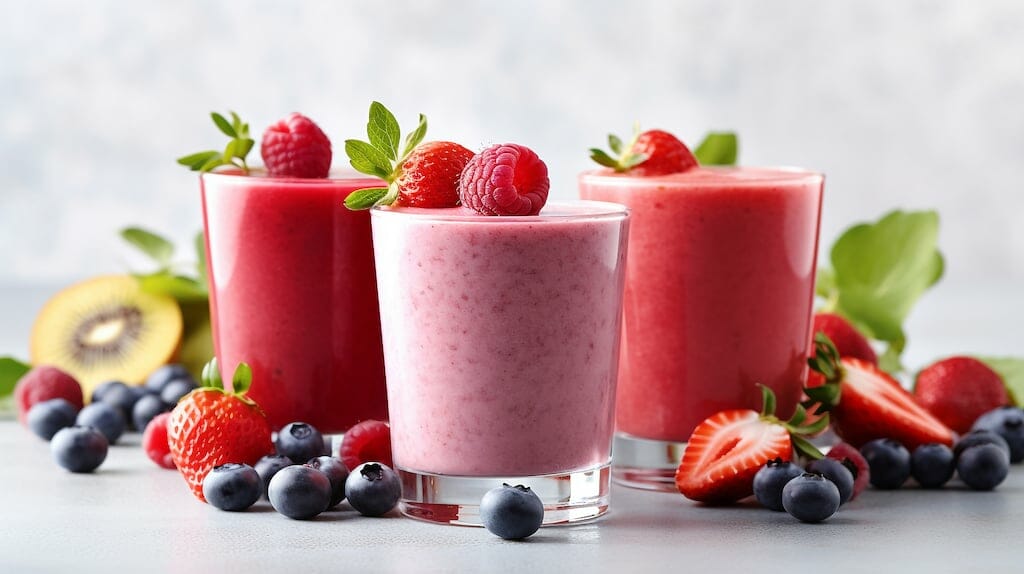September 20, 2023
Allergy Awareness and Wellness: Celebrating September with Health in Focus

September is a significant month in the world of health and allergy awareness. It’s not only the Food Safety Education Month, but we also commemorate Penicillin Allergy Awareness Day on September 22 and National Women’s Health and Fitness Day on September 29. At Greater Austin Allergy, we’re here to spotlight the symbiotic relationship between these observances and your overall well-being.
Unpacking Food Safety for Allergy Relief
Food safety goes beyond just ensuring that what we eat isn’t spoiled or contaminated with harmful bacteria. For those with a food allergy or allergies, it becomes a crucial step in daily life to prevent allergic reactions.
Why is food safety particularly crucial for allergy sufferers? Food allergies occur when the body’s immune system mistakenly identifies a particular food or a component of food as harmful. When these foods are consumed, even in the smallest amounts, the body and immune system releases chemicals like histamine, which can lead to allergy symptoms ranging from mild (hives or a stuffy nose) to severe (anaphylaxis, a life-threatening condition that requires immediate medical attention).
Given this, ensuring food safety specifically concerning allergens becomes crucial. Here’s how:
Read labels carefully:
- Background: Manufacturers often change the ingredients in food products—either due to new recipes, cost-saving measures, or other reasons.
- Implication: If a person with a food allergy neglects to read labels every time, they might inadvertently consume a product containing their allergen.
- Pro Tip: Look for the “contains” statement on food labels, which will list common allergens.
Avoid cross-contamination:
- Background: Cross-contamination occurs when allergenic foods come into contact with other foods, surfaces, or utensils.
- Implication: Even a minuscule amount of the allergen can trigger a reaction. For example, using the same knife to cut a peanut butter sandwich then slice an apple can be dangerous for someone with a peanut allergy.
- Pro Tip: Color-code kitchen utensils and cutting boards. For instance, always use the “red” board for allergenic foods.
Always ask about ingredients when dining out:
- Background: Restaurants and cafes might not always list every ingredient in a dish.
- Implication: Hidden ingredients or cross-contamination in a kitchen can pose risks.
- Pro Tip: Inform the waitstaff of your food allergy. Opt for restaurants that are known to be allergy-friendly or have allergy menus.
Store foods properly:
- Background: How you store foods can prevent cross-contact.
- Implication: Storing allergenic foods next to non-allergenic foods, especially in loose forms like flours or powders, can lead to unintentional mixing.
- Pro Tip: Use clear, labeled containers. Store allergenic foods on separate shelves or in separate drawers in the fridge.
Educate others:
- Background: Those without allergies may not understand the severity of reactions or the risks of cross-contamination.
- Implication: Friends or family might inadvertently serve allergenic foods.
- Pro Tip: Have a frank conversation about your allergies. Consider providing them with a list of your allergens and safe handling practices.
By understanding and implementing these food safety practices, individuals with allergies can significantly reduce the risk of unintentional exposure, the associated health implications, and creating a need for treating symptoms.
Demystifying Penicillin Allergies
Penicillin, one of the earliest antibiotics discovered, has been a vital tool in our medicinal arsenal against bacterial infection. However, reported allergies to penicillin have made its use problematic for many. As we spotlight Penicillin Allergy Awareness on September 22, it’s essential to unravel the misconceptions commonly surrounding this allergy.
Understanding Penicillin Allergies: A genuine penicillin allergy triggers an immune response when an individual consumes the antibiotic. Symptoms can range from mild rashes and swelling to severe anaphylaxis. Yet, studies indicate that many who believe they’re allergic might not be. So, why the confusion?
Misdiagnosis is common:
- Background: Penicillin allergy symptoms can resemble reactions from viral infections or other factors. For instance, a child might develop a rash after taking penicillin. Still, the rash could be due to a concurrent viral infection rather than the medication.
- Implication: Many individuals, especially those diagnosed in childhood, might carry the label of “penicillin-allergic” into adulthood without ever having a true allergic reaction to the antibiotic.
- Pro Tip: If you were diagnosed with a penicillin allergy in the past, especially during childhood, it’s worth reassessing with an allergist.
Get tested:
- Background: Allergy skin tests can determine whether an individual is truly allergic to penicillin.
- Implication: Correctly identifying if one can safely take penicillin can open doors to effective and cost-efficient treatment options. Penicillin and its derivatives are often first-line treatments for numerous infections.
- Pro Tip: If there’s uncertainty about a penicillin allergy, consider undergoing an allergy skin test under the supervision of an allergist.
Alternative antibiotics can have side effects:
- Background: When penicillin is ruled out due to suspected allergies, after a physical exam, doctors prescribe alternative antibiotics. These alternatives might not be the first choice for the specific infection and can come with their own set of side effects.
- Implication: Overreliance on alternative antibiotics can lead to higher medical costs and might not treat the infection as effectively as penicillin would. Further, overprescribing certain antibiotics can contribute to antibiotic resistance, a significant global health concern.
- Pro Tip: Understand the implications of alternative antibiotics. If you can safely take penicillin, it might be the best option for specific infections.

To truly serve our health best, it’s crucial to understand the nature of penicillin allergies. Accurate diagnosis can make a significant difference in treatment choices, costs, and outcomes. This September 22, let’s pledge to be more informed and proactive about our health decisions.
Women’s Health, Fitness, Allergy Testing, and Asthma
As National Women’s Health and Fitness Day draws near, it’s essential to spotlight a vital aspect that often interplays with women’s health: allergies and asthma. In our multifaceted, bustling lives, understanding and managing systemic symptoms of allergies and asthma can be pivotal in elevating our overall well-being.
The Interconnection of Allergies, Asthma, and Women’s Health:
Enhanced Exercise Regime:
- Background: Outdoor allergens such as pollen, mold, and insect stings can disrupt outdoor workouts. Furthermore, exercise can sometimes trigger asthma symptoms, known as exercise-induced bronchoconstriction (EIB).
- Implication: Recognizing allergens and understanding one’s asthma triggers can help women craft exercise routines that are safe and efficient.
- Pro Tip: If you’re asthmatic or suspect EIB, always warm-up before intense activities and consider using a prescribed inhaler as a preventive measure. Exercise-Induced Bronchoconstriction (EIB), often referred to as exercise-induced asthma, is a condition where the airways in the lungs constrict or narrow during or after exercise. This results in a range of respiratory symptoms. Here are the common symptoms of EIB:
- Shortness of Breath
- Coughing
- Wheezing
- Chest Tightness
- Decreased Exercise Endurance
- Prolonged Recovery Time
- Nocturnal Symptoms
Beauty, Skin Care, and Respiratory Health:
- Background: Beauty products can contain allergens leading to skin reactions. Similarly, certain fragrances or components can act as asthma triggers when inhaled.
- Implication: Knowing your triggers can guide you to choose products that are both skin-friendly and won’t provoke asthma symptoms.
- Pro Tip: Opt for hypoallergenic beauty products and ensure room fresheners or perfumes don’t aggravate your respiratory system.
Strategies for Fitness with Allergies and Asthma:
Indoor Workouts:
- Background: During high pollen count days or peak asthma-trigger seasons (Ragweed is common this time of year), the outdoors might not be the friendliest.
- Implication: Transitioning to indoor workouts can help maintain fitness routines without risking allergic reactions or asthma attacks.
- Pro Tip: Consider activities like indoor cycling, dance, or pilates that can be equally effective and safe.
Medication and Preparedness:
- Background: Both allergic reactions and a sudden asthma attack require swift medical interventions.
- Implication: Being prepared ensures that you respond promptly to any adverse reactions, thus preventing severe outcomes.
- Pro Tip: Always carry antihistamines, prescribed asthma inhalers, or medications. Educate exercise partners about your conditions and emergency response actions.
Mind your Meals and Environment:
- Background: Consuming allergens before exercising might intensify reactions. Similarly, exercising in an environment with asthma triggers can be harmful.
- Implication: Opting for allergy and asthma-friendly environments can prevent discomfort or interruptions.
- Pro Tip: Plan your meals and workout surroundings. Ensure good ventilation if working out indoors and always be aware of the air quality.

By intertwining awareness about allergy symptoms, allergies and asthma into their health and fitness regimen, women can optimize their wellness journey, ensuring they are empowered, informed, and ready to face any challenges that come their way.
Allergy-Friendly Recipes
Allergy-Free Breakfast Smoothie

Ingredients:
- 1 banana
- 1 cup allergy-friendly milk (like oat or rice milk)
- 1 tbsp chia seeds
- 1/2 cup frozen berries
- 1 tbsp honey (or any sweetener)
Instructions:
- Blend all ingredients until smooth. Serve cold.
Gluten-Free and Nut-Free Quinoa Salad

Ingredients:
- 1 cup cooked quinoa
- 1/2 cup diced cucumber
- 1/2 cup diced bell peppers
- 2 tbsp olive oil
- Juice of 1 lemon
- Salt and pepper to taste
- Fresh parsley for garnish
Instructions:
- Mix quinoa, cucumber, and bell peppers.
- Whisk together olive oil, lemon juice, salt, and pepper. Pour over quinoa mix.
- Garnish with fresh parsley.
Conclusion
This September, let’s combine our efforts towards food allergy awareness, food safety, and holistic health. Here’s to a month of knowledge, well-being, and thriving!
Note: Always consult with an allergist or medical professional about your specific conditions and before making significant changes to your health and wellness routines.
